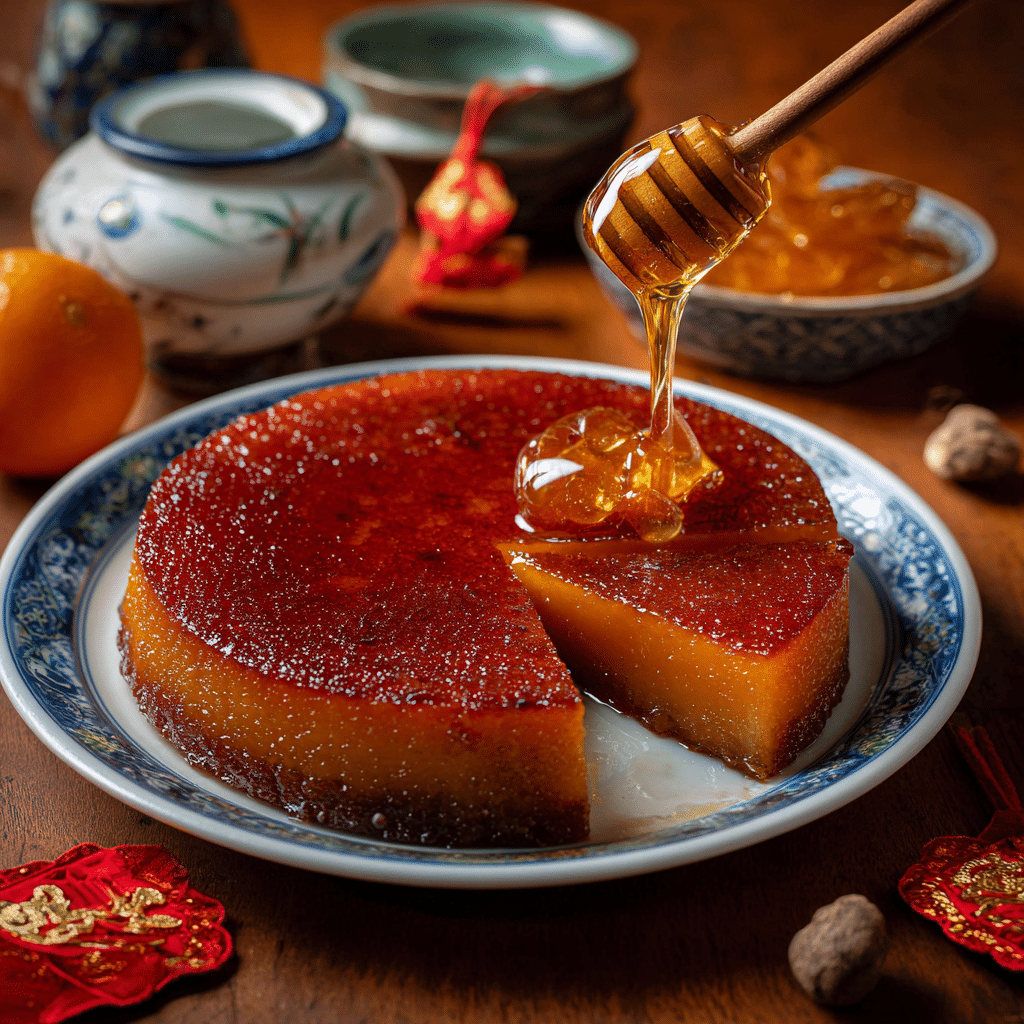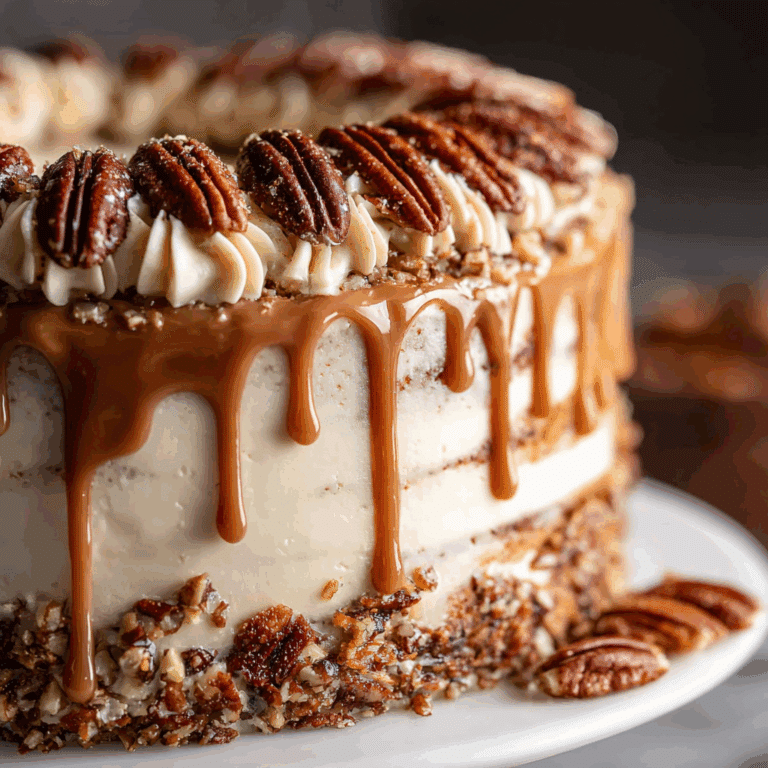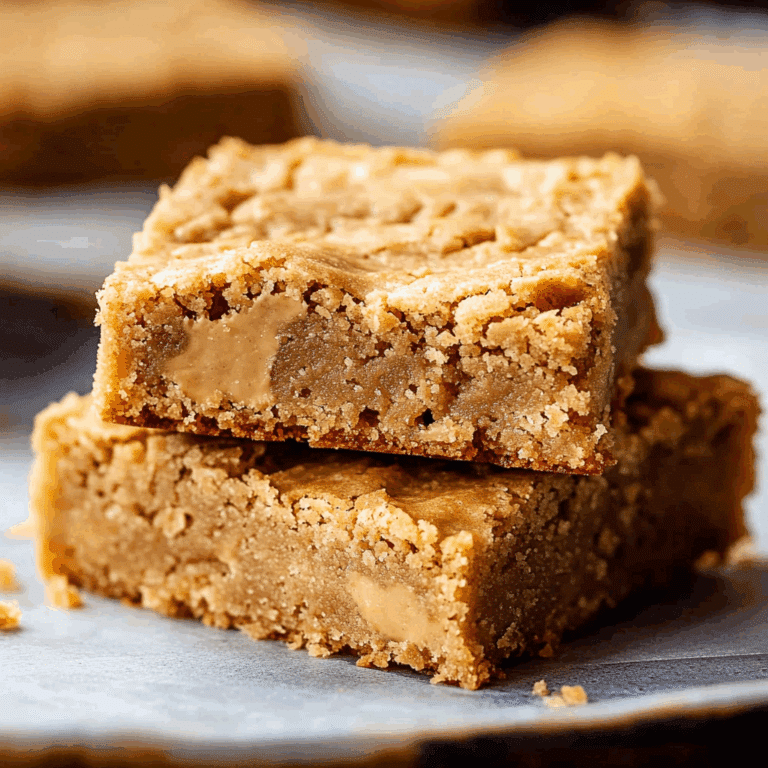Nian Gao (New Year Rice Cake)

Nian Gao (New Year Rice Cake) is more than just a delicacy; it’s a vibrant celebration of luck, tradition, and family warmth wrapped up in one sticky, sweet treat. This traditional Chinese rice cake is a festive must-try that holds special meaning during Lunar New Year celebrations. Whether steamed or pan-fried, every bite of Nian Gao carries centuries of cultural heritage, symbolizing advancement, prosperity, and togetherness for the year ahead. For those eager to taste this meaningful dessert, understanding its ingredients, preparation, and serving ideas will elevate your festive experience to new heights.
Why You’ll Love This Recipe
- Rich Cultural Significance: Nian Gao (New Year Rice Cake) symbolizes progress and good fortune, making it a meaningful dish to share with loved ones.
- Delightfully Versatile: Enjoy it steamed, pan-fried, or even as a sweet and savory treat, adapting perfectly to your taste preferences.
- Simple Ingredients: The recipe uses a few basic ingredients that come together to create a uniquely sticky and chewy texture everyone adores.
- Easy to Make at Home: You don’t need complicated tools or techniques, making it perfect for home cooks of all skill levels.
- Perfect Festive Dessert: Its subtle sweetness and rich texture make it an ideal ending to any Lunar New Year feast or celebration.
Ingredients You’ll Need
The beauty of Nian Gao (New Year Rice Cake) lies in its straightforward list of ingredients. Each one plays a vital role, whether it’s the sticky texture, the mellow sweetness, or the subtle fragrance that makes this cake truly special.
- Glutinous Rice Flour: The foundation of the cake, providing that signature sticky and chewy texture.
- Brown Sugar: Adds natural sweetness and a beautiful caramel-colored hue.
- Water: Essential for mixing the batter to the perfect consistency.
- Oil (Optional): Helps prevent sticking and can add a slight richness to the finished cake.
- Red Dates or Nuts (Optional): Used as toppings or mixed into the batter for extra flavor and texture.
Variations for Nian Gao (New Year Rice Cake)
Nian Gao (New Year Rice Cake) is wonderfully adaptable, letting you put your creative spin on this festive treat. Whether you want to make it healthier, sweeter, or add texture, these variations will inspire you.
- Mango or Coconut Infusion: Incorporate mango puree or coconut milk into the batter for a tropical twist.
- Pan-Fried Nian Gao: Slice and pan-fry for a crispy outside while retaining a chewy center.
- Red Bean Filling: Add a sweet red bean paste inside for a delightful surprise in every bite.
- Gluten-Free Version: Substitute traditional rice flour with a gluten-free blend suitable for specific dietary needs.
- Nutty Crunch: Mix in toasted sesame seeds or crushed peanuts for added texture.

How to Make Nian Gao (New Year Rice Cake)
Step 1: Prepare the Batter
Start by dissolving the brown sugar in warm water, stirring until fully melted to form a sweet syrup. Then, gradually mix in the glutinous rice flour until the batter is smooth and free of lumps, resembling a thick pancake batter consistency.
Step 2: Pour into the Pan
Lightly oil a steaming pan or mold, then pour the batter evenly to ensure uniform thickness. If using optional toppings like red dates or nuts, sprinkle them on top at this stage for visual appeal and extra flavor.
Step 3: Steam the Cake
Place the pan in a steamer and cook over medium-high heat for about 45 to 60 minutes, or until the cake is fully set and slightly translucent. Avoid opening the lid frequently to maintain consistent steam.
Step 4: Cool and Remove
Once steamed, allow the cake to cool completely before gently loosening the edges and removing it from the pan. Cooling helps the cake hold its shape and enhances its chewy texture.
Step 5: Slice and Serve
Cut the Nian Gao into thin slices. For a delicious twist, you can serve it freshly steamed or pan-fried in a little oil until golden on both sides, adding a crispy contrast to its chewy center.
Pro Tips for Making Nian Gao (New Year Rice Cake)
- Control Consistency: Adjust water slowly when mixing the batter to avoid it becoming too runny or thick.
- Steam Evenly: Use a tight-fitting lid with a cloth wrap to catch excess water droplets and maintain proper steaming.
- Cool Properly: Let the cake cool before slicing to prevent sticking and tearing.
- Serve Fresh or Fried: Both methods enhance texture—fresh offers softness, while pan-fried adds a crispy edge.
- Store Correctly: Wrapping leftover slices with plastic wrap keeps them moist and fresh.
How to Serve Nian Gao (New Year Rice Cake)
Garnishes
Traditional garnishes like toasted sesame seeds, finely chopped nuts, or thin slices of red dates add a lovely crunch and sweetness that perfectly complement the cake’s sticky texture and caramel notes.
Side Dishes
Nian Gao pairs beautifully with savory dishes such as stir-fried vegetables or meats, creating a balanced meal that mixes soft, sweet textures with hearty, flavorful sides.
Creative Ways to Present
Try stacking thin slices in a tiered display with alternating colors or frying pieces into bite-sized squares and serving on skewers with a drizzle of honey or soy sauce for a modern, festive appetizer.
Make Ahead and Storage
Storing Leftovers
Wrap leftover Nian Gao tightly in plastic wrap or place in an airtight container, storing it in the refrigerator for up to 5 days to maintain its chewy texture and freshness.
Freezing
Nian Gao freezes well when wrapped securely in plastic and foil. Freeze in individual portions to make thawing quick and convenient; it can last up to 1 month in the freezer.
Reheating
Reheat by steaming or pan-frying. Steaming gently softens the cake while pan-frying adds a delicious crisp exterior—both methods restore its delightful texture and flavor.
FAQs
What does Nian Gao (New Year Rice Cake) symbolize?
Nian Gao symbolizes growth, prosperity, and good fortune for the year ahead, making it an essential celebratory dish during Lunar New Year.
Is Nian Gao sweet or savory?
Traditionally, Nian Gao is sweet due to brown sugar, but it can be adapted to savory versions by adding ingredients like dried shrimp or mushrooms.
Can I make Nian Gao without a steamer?
While steaming is traditional, you can use a microwave or oven with the right settings, but a steamer gives the best texture and even cooking.
How long does homemade Nian Gao last?
When stored properly in the refrigerator, Nian Gao stays fresh for up to 5 days; freezing prolongs its shelf life up to a month.
What can I serve with Nian Gao?
Nian Gao pairs well with savory stir-fries, tea, or even with a dollop of sweetened condensed milk or honey for a decadent treat.
Final Thoughts
Nian Gao (New Year Rice Cake) is truly a festive must-try that brings warmth, tradition, and deliciousness to your celebrations. Its simple ingredients and meaningful symbolism create a dish worth sharing with family and friends. Whether you keep it classic or try creative variations, this versatile rice cake promises a joyful experience in every bite. Give it a try this year and embrace the rich culture and good luck it represents.
Related Posts
- Chinese Jian Dui (Crispy Sesame Balls)
- Chocolate Chow Mein Cookie Clusters
- Chinese New Year Chocolate Coins

Nian Gao (New Year Rice Cake)
- Total Time: 1 hour
- Yield: 8-10 servings 1x
- Diet: Gluten Free
Description
Nian Gao (New Year Rice Cake) is a traditional Chinese festive dessert symbolizing progress, prosperity, and togetherness during Lunar New Year celebrations. Made from simple ingredients like glutinous rice flour and brown sugar, it has a uniquely sticky and chewy texture that can be enjoyed steamed or pan-fried. This versatile and meaningful recipe is easy to prepare at home and perfect for sharing with family and friends.
Ingredients
Basic Ingredients
- 2 cups glutinous rice flour
- 1 cup brown sugar
- 1 1/4 cups warm water
- 1 tbsp oil (optional)
Optional Additions
- Red dates or nuts for topping or mixing
- Mango puree or coconut milk (for tropical variation)
- Sweet red bean paste (for filling)
- Toasted sesame seeds or crushed peanuts (for added texture)
Instructions
- Prepare the Batter: Dissolve the brown sugar in warm water, stirring until fully melted to form a sweet syrup. Gradually mix in the glutinous rice flour until the batter is smooth and free of lumps, resembling a thick pancake batter consistency.
- Pour into the Pan: Lightly oil a steaming pan or mold, then pour the batter evenly to ensure uniform thickness. If using optional toppings like red dates or nuts, sprinkle them on top for visual appeal and extra flavor.
- Steam the Cake: Place the pan in a steamer and cook over medium-high heat for about 45 to 60 minutes, or until the cake is fully set and slightly translucent. Avoid opening the lid frequently to maintain consistent steam.
- Cool and Remove: Allow the cake to cool completely before gently loosening the edges and removing it from the pan. Cooling helps the cake hold its shape and enhances its chewy texture.
- Slice and Serve: Cut the Nian Gao into thin slices. Serve freshly steamed or pan-fry in a little oil until golden on both sides, adding a crispy contrast to the chewy center.
Notes
- Adjust water gradually when mixing the batter to avoid a mixture that’s too runny or too thick.
- Use a tight-fitting steamer lid with a cloth wrap to prevent excess water from dripping onto the cake.
- Let the cake cool completely before slicing to prevent sticking and tearing.
- Serve fresh for softness or pan-fried for a crispy texture on the outside.
- Wrap leftover slices with plastic wrap to keep them moist and fresh.
- Prep Time: 15 minutes
- Cook Time: 45-60 minutes
- Category: Appetizers
- Method: Steaming
- Cuisine: Chinese
Nutrition
- Serving Size: 1 slice (about 80g)
- Calories: 150 kcal
- Sugar: 10g
- Sodium: 5mg
- Fat: 1g
- Saturated Fat: 0.2g
- Unsaturated Fat: 0.8g
- Trans Fat: 0g
- Carbohydrates: 35g
- Fiber: 1g
- Protein: 2g
- Cholesterol: 0mg
Keywords: Nian Gao, New Year Rice Cake, Chinese dessert, Lunar New Year, glutinous rice cake, steamed rice cake, festive dessert, traditional Chinese food






